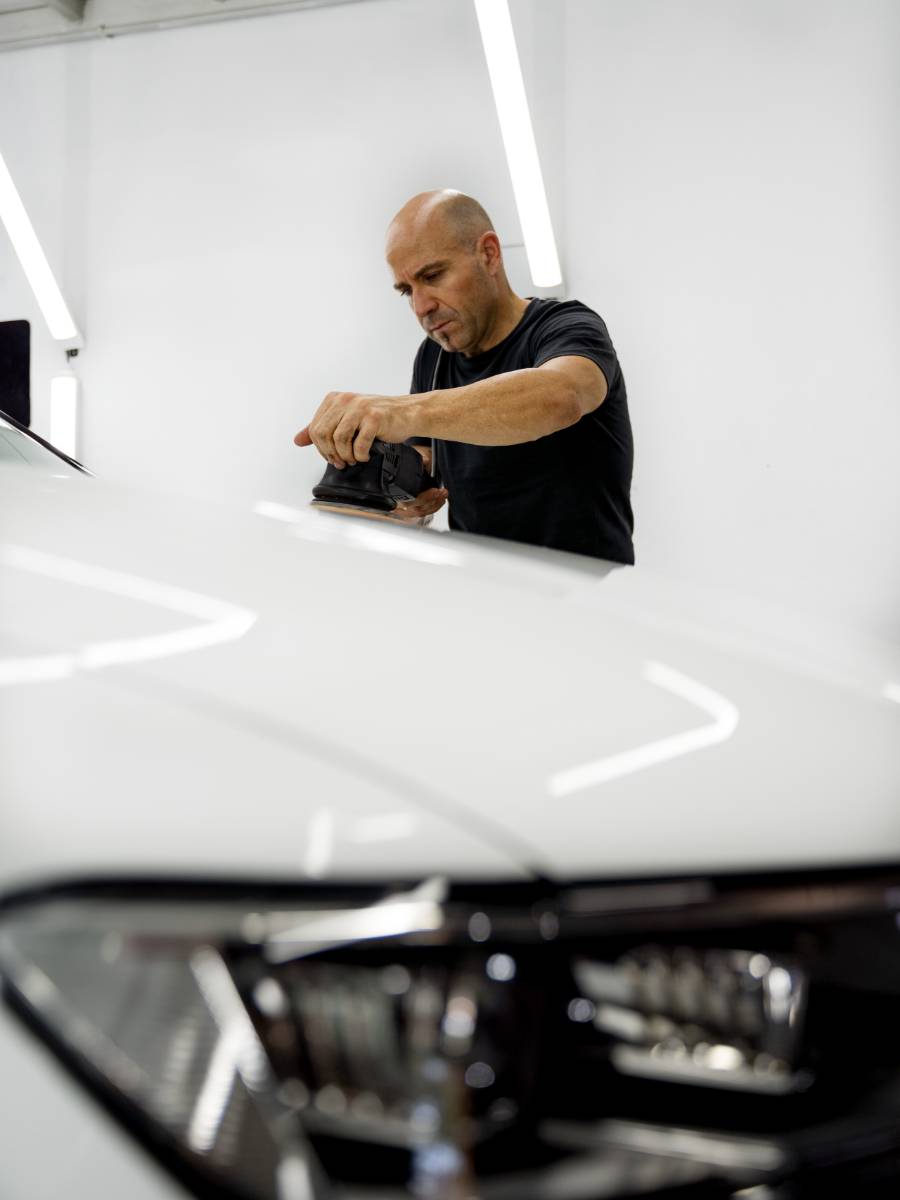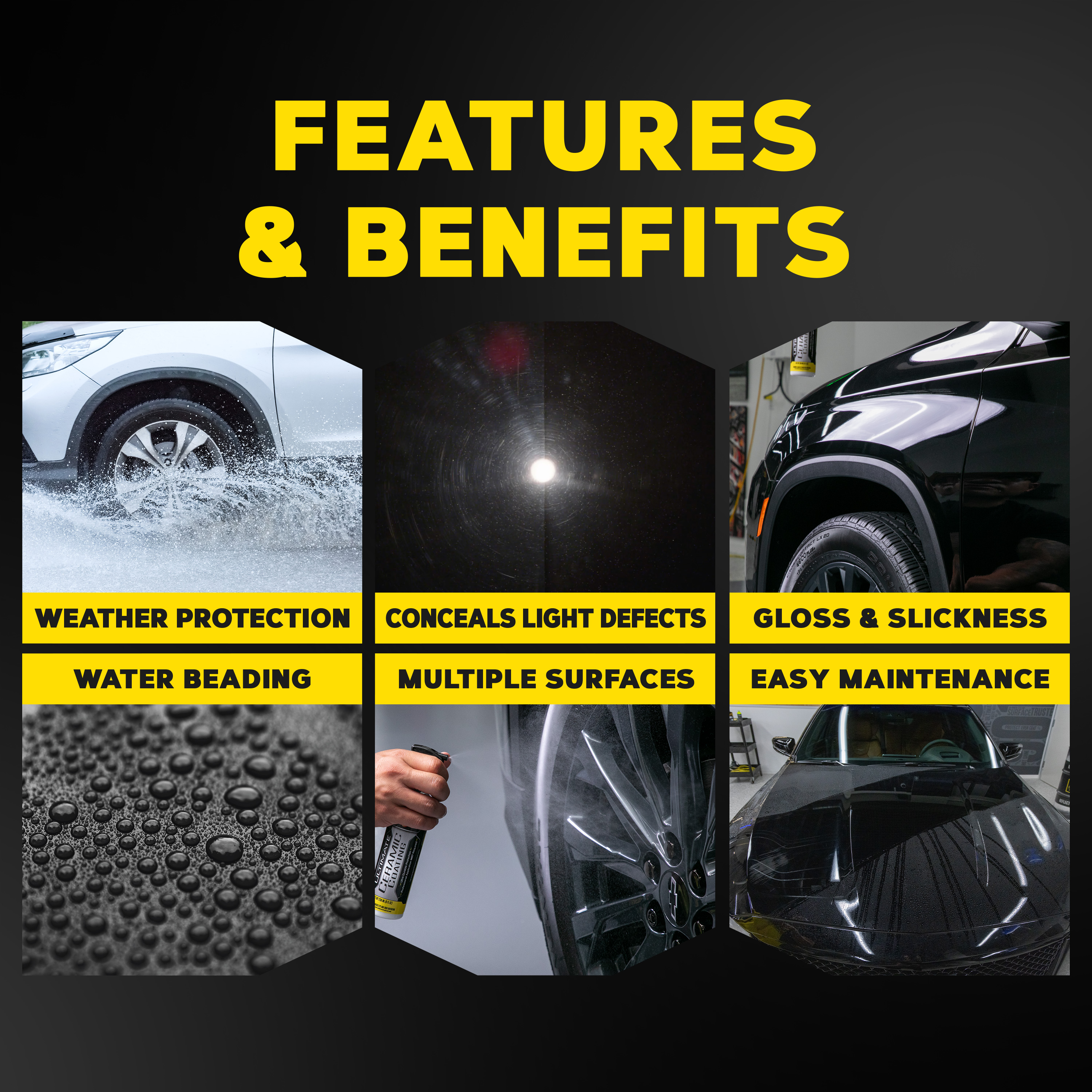Why Ceramic Coating Is Essential for Maintaining Your Car’s Paint
Why Ceramic Coating Is Essential for Maintaining Your Car’s Paint
Blog Article
Ceramic Layer vs. Conventional Wax: Which Offers Much Better Long-Term Protection?
The argument in between ceramic coverings and traditional wax for vehicle security has actually gathered significant interest among automotive enthusiasts and professionals alike. While both serve the objective of guarding paint, their distinctions in toughness, application, and long-lasting maintenance prices may influence a customer's option. Ceramic finishes flaunt superior long life and resistance to environmental aspects, yet the complexity of their application elevates inquiries about availability and functionality. As we explore these contrasting choices, it comes to be important to consider not only the immediate advantages yet also the implications for car treatment gradually.
Overview of Ceramic Finish
Ceramic layer has actually acquired substantial popularity among auto enthusiasts and detailers alike because of its sophisticated protective top qualities. This innovative modern technology is developed to create a resilient, hydrophobic guard over a lorry's paint surface area, considerably enhancing its resistance to ecological pollutants such as dust, UV rays, and chemical discolorations. Unlike standard wax, which supplies a momentary layer of protection, ceramic coatings bond at a molecular degree with the paint, providing resilient resilience-- commonly expanding past 2 years with appropriate maintenance.
The application process entails thorough preparation of the car's surface area, consisting of cleaning and brightening to make sure ideal bond. When used, the finishing treatments to develop a durable layer that not just adds deepness and gloss to the paint however also streamlines maintenance. With its hydrophobic properties, ceramic finishing enables water and dust to slide off even more easily, minimizing the regularity of washes and minimizing the threat of swirl marks.
Moreover, ceramic finishings are readily available in numerous formulas, enabling individuals to select products tailored to their details needs and preferences. Generally, ceramic layer stands for a considerable improvement in paint protection modern technology, delivering exceptional performance contrasted to conventional options.
Introduction of Standard Wax
Generally considered as a staple in auto care, wax functions as a popular selection for those looking for a straightforward technique to enhance and protect their vehicle's paint - ceramic coating. Automotive wax typically comprises natural active ingredients, such as carnauba, or artificial compounds, developed to create a protective layer externally of the paint. This layer not just boosts the vehicle's gloss and radiate but likewise provides an obstacle versus environmental impurities
The application of wax is typically straightforward, making it accessible for both experts and do it yourself fanatics. It can be used by hand or maker, permitting versatility in the detailing procedure. As soon as applied, wax requires a treating period, after which it solidifies to develop a protective shell. Wax is likewise known for its capability to ward off water, advertising a beading result that helps in the prevention of water places and deterioration.
Nonetheless, while wax is reliable for enhancing the aesthetic appeal of a car, it is very important to note that the protection it offers might demand extra frequent reapplication compared to different items, such as ceramic finishes. In general, conventional wax remains a favored alternative for those prioritizing ease of use and instant visual improvement.
Resilience and Longevity Comparison
While both ceramic finishes and standard wax offer protective benefits for vehicle paint, their longevity and longevity differ considerably. Standard wax, normally made from all-natural carnauba or artificial polymers, typically gives a protective layer that lasts about three to 6 months. This fairly short life-span demands routine reapplication to preserve optimum protection.
On the other hand, ceramic coatings are crafted from More Bonuses advanced nanotechnology, creating a covalent bond with the paint surface area. This causes a robust, hydrophobic layer that can endure for two to 5 years, relying on the product and environmental conditions. The premium toughness of ceramic layers is associated to their chemical framework, which supplies improved resistance to scrapes, UV rays, and oxidation.

Security Against Environmental Variables
Securing a lorry's paint from environmental factors is critical for maintaining its look and worth over time. Cars are frequently exposed to a selection of aspects, including UV rays, bird droppings, tree sap, acid rainfall, and roadway crud, all of which can endanger the stability of the paintwork.
Ceramic coatings provide a robust protection against these ecological assailants. Unlike typical wax, which can degrade promptly under UV direct exposure, ceramic finishings create a resilient, hydrophobic layer that withstands the damaging effects of sunshine and environmental toxins. This advanced modern technology produces a chemical bond with the automobile's surface, using superior protection that lasts for several years, even in harsh conditions.
In contrast, ceramic coverings maintain their protective top qualities longer, considerably minimizing the risk of paint damage and guaranteeing that the vehicle retains its visual appeal. As a result, ceramic layers are significantly acknowledged as the superior option for lasting protection versus ecological elements.
Application and Maintenance Distinctions
The approaches of application and subsequent upkeep for ceramic coverings and traditional wax vary dramatically, influencing the overall user experience and performance of each product. Ceramic layers call for an even more complex application process, usually involving surface prep work that includes washing, decontaminating, and brightening the automobile. When the surface prepares, the ceramic finish is applied in a regulated atmosphere, typically needing professional competence to make sure proper treating and bonding to the paint.

While both items boost lorry look, the longer-lasting defense supplied by ceramic coverings may warrant their first investment, regardless of the more demanding application process. Alternatively, conventional wax continues to be a click this preferred selection for those seeking an easier, albeit short-term, solution.

Conclusion
To conclude, ceramic finishes show substantial advantages over typical wax in regards to sturdiness and environmental management. With a lifespan extending 2 to five years and premium resistance to UV rays, dust, and chemical spots, ceramic coverings supply an extra effective solution for long-term automobile upkeep. The application procedure may need expert competence, the resulting cost savings and reduced regularity of reapplication underscore the value of ceramic layers for those seeking optimal lorry protection.
The debate in between ceramic coverings and conventional wax for automobile security has amassed considerable focus among automotive lovers and specialists alike. Unlike conventional wax, which supplies a short-term layer of security, ceramic coverings bond at a molecular degree with the paint, providing lasting sturdiness-- often expanding beyond 2 years with correct upkeep.
While both ceramic finishings and standard wax offer protective benefits for vehicle paint, their toughness and durability vary dramatically. For car enthusiasts seeking lasting protection, ceramic layers provide an engaging advantage over traditional wax items.
In verdict, ceramic layers show considerable benefits over standard wax in terms of longevity and ecological security.
Report this page